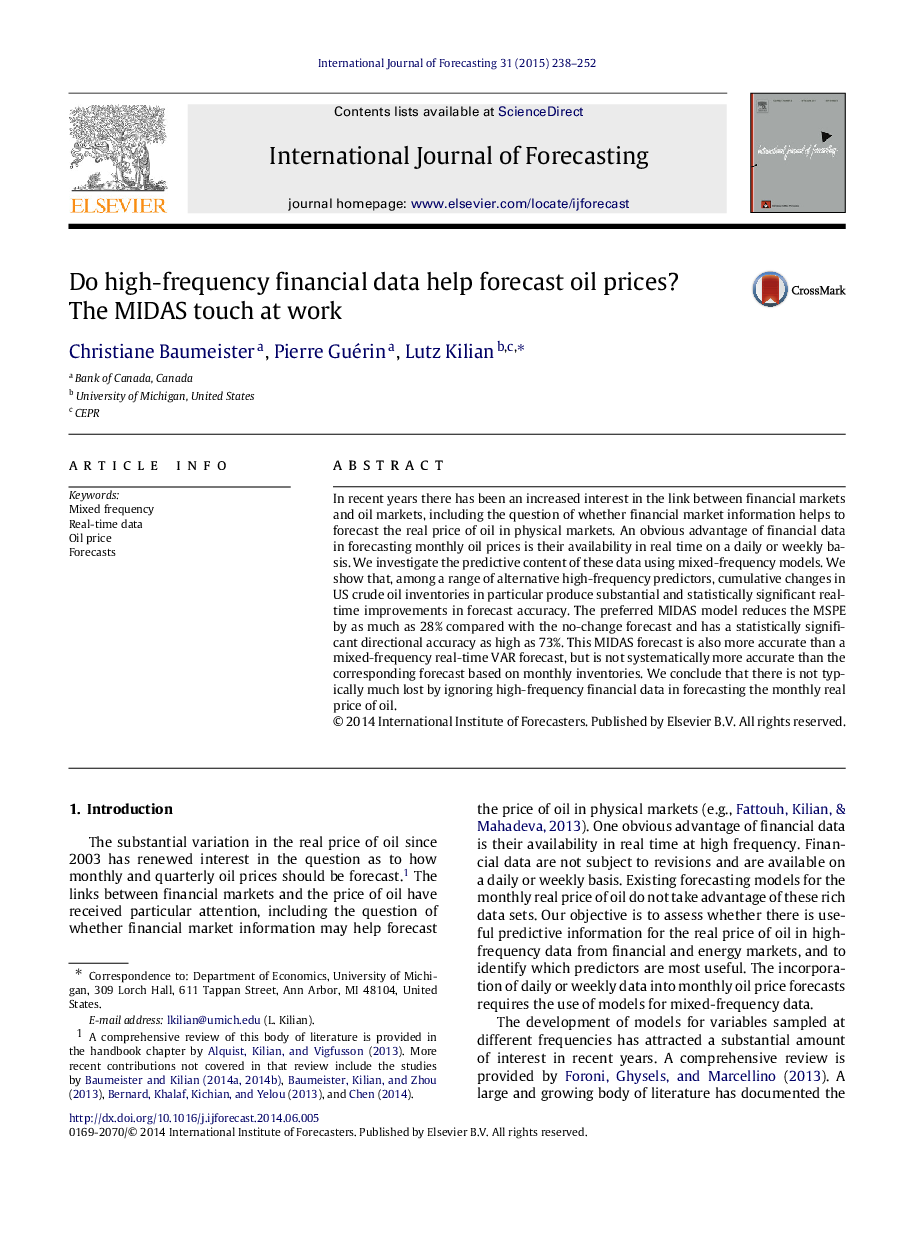| Article ID | Journal | Published Year | Pages | File Type |
|---|---|---|---|---|
| 7408409 | International Journal of Forecasting | 2015 | 15 Pages |
Abstract
In recent years there has been an increased interest in the link between financial markets and oil markets, including the question of whether financial market information helps to forecast the real price of oil in physical markets. An obvious advantage of financial data in forecasting monthly oil prices is their availability in real time on a daily or weekly basis. We investigate the predictive content of these data using mixed-frequency models. We show that, among a range of alternative high-frequency predictors, cumulative changes in US crude oil inventories in particular produce substantial and statistically significant real-time improvements in forecast accuracy. The preferred MIDAS model reduces the MSPE by as much as 28% compared with the no-change forecast and has a statistically significant directional accuracy as high as 73%. This MIDAS forecast is also more accurate than a mixed-frequency real-time VAR forecast, but is not systematically more accurate than the corresponding forecast based on monthly inventories. We conclude that there is not typically much lost by ignoring high-frequency financial data in forecasting the monthly real price of oil.
Related Topics
Social Sciences and Humanities
Business, Management and Accounting
Business and International Management
Authors
Christiane Baumeister, Pierre Guérin, Lutz Kilian,
